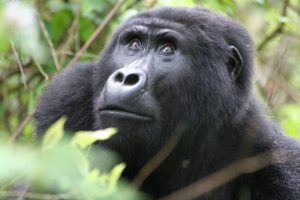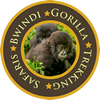Uganda Gorilla habituation experience is an everlasting memory that takes place in only Uganda among the three countries where mountain gorillas are found in Africa. Gorilla habituation takes place in Bwindi Impenetrable National Park which located in the southwest of Uganda approximately 463 kilometres from Kampala the capital of Uganda. The experience is normally taking place in the Rushaga region in the south of Bwindi National Park. Uganda Gorilla habituation is an activity where mountain gorillas get used to the presence of humans in their natural home. This is a newly activity where Uganda Wildlife Authority has introduced in 2015 in the southern sector is known as Rushaga region-Bwindi Impenetrable Forest National Park.BOOK NOW

Gorilla Habituation Experience in Uganda
Rushaga sector is known for having a high number of gorilla trekking families Bwindi with over 9 gorilla families which are found here including the 2 gorilla families which habituated for gorilla habituation experience, the Bikyingi, and the Bushaho gorilla family. It’s unlike the gorilla trekking duration, gorilla habituation allows the visitor to undertake 4 hours with mountain gorillas in the face to face while learning their behaviors, characters, historical background and so on in their natural home. The Bikyingi gorilla family embraces with 21 gorilla members which including 1 silverback, 9 adult females 2 sub-adults and 9 infants, whereas the Bushaho gorilla family contains with 8 individuals including 1 silverback, 3 adult females, 1 black back, 1 sub-adult, 1 juvenile, and 2 toddlers.
Uganda Gorilla habituation permit
Uganda Gorilla habituation permits cost USD 1500.00 per person per trek which grant you the chance to see mountain gorillas in over 4 hours unlike gorilla trekking for 1 hour in their natural state. Currently, there are two gorilla families for habituation, and there is only 8 gorilla permit which is sold every day meaning that each gorilla family has four gorilla permit which is sold every day and only four visitors are allowed for gorilla habituation experience. We strongly advise you to book your gorilla habituation permit as earlier as three months in advance in order to avoid inconvenience through containing us for more information or you can book directly to Uganda Wildlife Authority (UWA) which is responsible for who is only responsible for supplying Gorilla permits in Uganda.
Undertaking Gorilla Habituation in Uganda via Kigali is done
Gorilla Habituation in Uganda via Kigali starts and ends in Kigali. Instead of traveling 8-10 hours from Kampala to Bwindi Impenetrable National Park, you can have a less hectic journey by using Kigali International Airport (as your arrival airport) then crossing over to Uganda through Cyanika border in Kisoro or Katuna border in Kabale, then continuing to Bwindi Impenetrable National Park in a journey that lasts approximately 4 hours. Unlike gorilla trekking, the Habituation Experience starts earlier with arriving at the briefing point with the right equipment. What to wear on a gorilla trekking and gorilla tracking rules and regulation are similar to gorilla habituation experience for example a walking stick, non-flash camera and backpack, no close contact with gorillas, a rain jacket, long-sleeved shirt, long trousers, hat, gardening gloves and strong waterproof hiking boots, packed lunch and drinking water among others. While at the briefing point, you will be told about what to expect and the dos and don’ts of the activity. The trek, lasting one hour to 4 hours in the jungle starts at 7:00 am and involves passing through areas of different elevations with varying levels of difficulty as well as vegetation types and culminates in an encounter with the gorilla family, with whom you will spend four hours.
Best time to do gorilla habituation experience
The best time visiting Bwindi forest for doing gorilla habituation experience is the whole year from January to December. However, the best time for doing gorilla habituation experience in Rushaga-Bwindi National Park is in the dry season of June, July, August and September, December, January, February. During this season, there is less or no rainfall and the trail tends to be dry making the gorilla habituation easier and enjoyable
